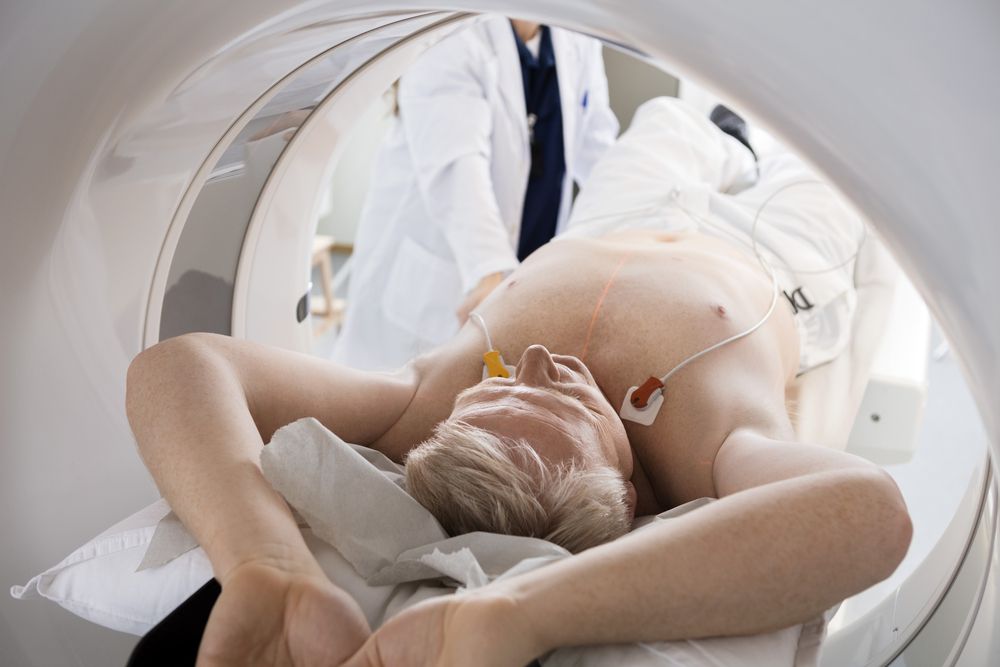Article
MRI-Guided Treat-to-Target May Deserve a Second Look
MRI-guided treat-to-target treatment for patients with rheumatoid arthritis is no better than conventional treat-to-target strategies, researchers reported in JAMA in February. However, in a new commentary posted this month in JAMA, researchers raise some interesting points experts may want to reconsider.
(©TylerOlsonShutterstock.com)

MRI-guided treat-to-target treatment for patients with rheumatoid arthritis is no better than conventional treat-to-target strategies, researchers reported in JAMA in February. However, in a new commentary posted this month in JAMA, researchers raise some interesting points experts may want to reconsider.
In the original study, which was led by Mikkel Ostergaard, M.D., Ph.D., of the University of Copenhagen, Denmark, the more expensive MRI strategy did not appear to slow the disease, lead to remission or reduce radiographic progression.
This was a two-year, randomized study of 200 patients (mean age 61.6 years) who were in remission, which was defined has having a DAS28-CRP score of less than 3.2 with no swollen joints. The patients were randomly assigned to a group receiving MRI-guided treatment and a group receiving conventional treatment.
The treatment goal at 24 months was clinical remission with DAS28-CRP of 3.2 less and no swollen joints for the MRI-treated group and clinical remission for the conventionally treated group. But the MRI-treated group only achieved 85 percent remission as compared to 88 percent for the conventional treatment strategy.
HOW CAN THIS BE?
Magnetic resonance imaging (MRI) is known to offer a more precise measure of joint inflammation and damage than X-Rays or a physical examination. The scans were conducted before every visit to clearly determine the patient's status before treatment delivery.
"One potential explanation for the lack of improved remission rates in the MRI-guided treat-to-target group is that participants randomized to this group had a lower rate of remission at baseline than participants in the conventional treat-to-target group (86% vs 96%). Furthermore, both groups were treated intensively by injecting all swollen joints, which has been shown to provide more prolonged inflammation control, contributing to low disease activity in both groups," the authors wrote.
In a commentary published on July 2 in JAMA, Annette H. M. van der Hem-van Mil, M.D., Ph.D., of Leiden University Medical Center, Leiden, the Netherlands, highlighted a few points that may explain the findings:
- 46 percent of the MRI-treated group had used biologics, compared to 2 percent of the conventional strategy group.
- The authors defined "subclinical inflammation" as "any bone marrow edema in any bone of the wrist or metacarpophalangeal joints." While edema is a predictor of RA progression, it is not exclusive to RA and is not uncommon in the general population especially in older populations.
- The measures for edema were called into question. This could, in part, explain the results.
"A definition for subclinical inflammation preferably incorporates thresholds, which differ based on the joint/bone location and age category. Evaluation of combinations of bone marrow edema with other inflammatory features detected on MRI, such as synovitis or tenosynovitis, may be useful," she wrote.
REFERENCES
Signe Møller-Bisgaard, MD, PhD; Kim Hørslev-Petersen, MD, DMSc; Bo Ejbjerg, MD, PhD; et al. "Effect of Magnetic Resonance Imaging vs Conventional Treat-to-Target Strategies on Disease Activity Remission and Radiographic Progression in Rheumatoid Arthritis. The IMAGINE-RA Randomized Clinical Trial."JAMA. Feb. 5, 2019. DOI:10.1001/jama.2018.21362
Annette H. M. van der Hem-van Mil, MD, PhD; Tom W. J. Huizinga, MD, PhD; Johan L. Bloem, MD, PhD. "Treat-to-Target Strategies in Rheumatoid Arthritis."JAMA. July 2, 2019. DOI:10.1001/jama.2019.5848




